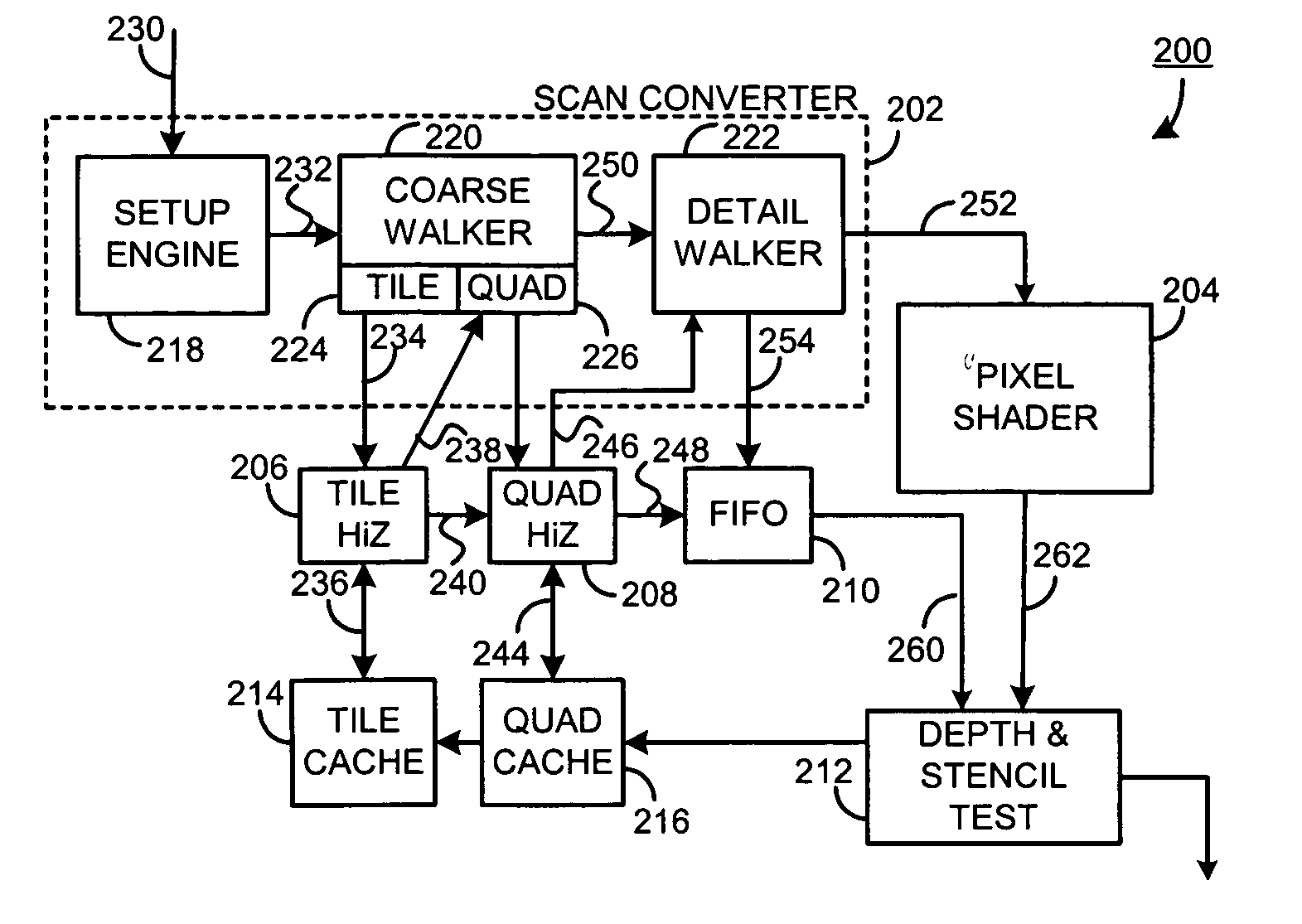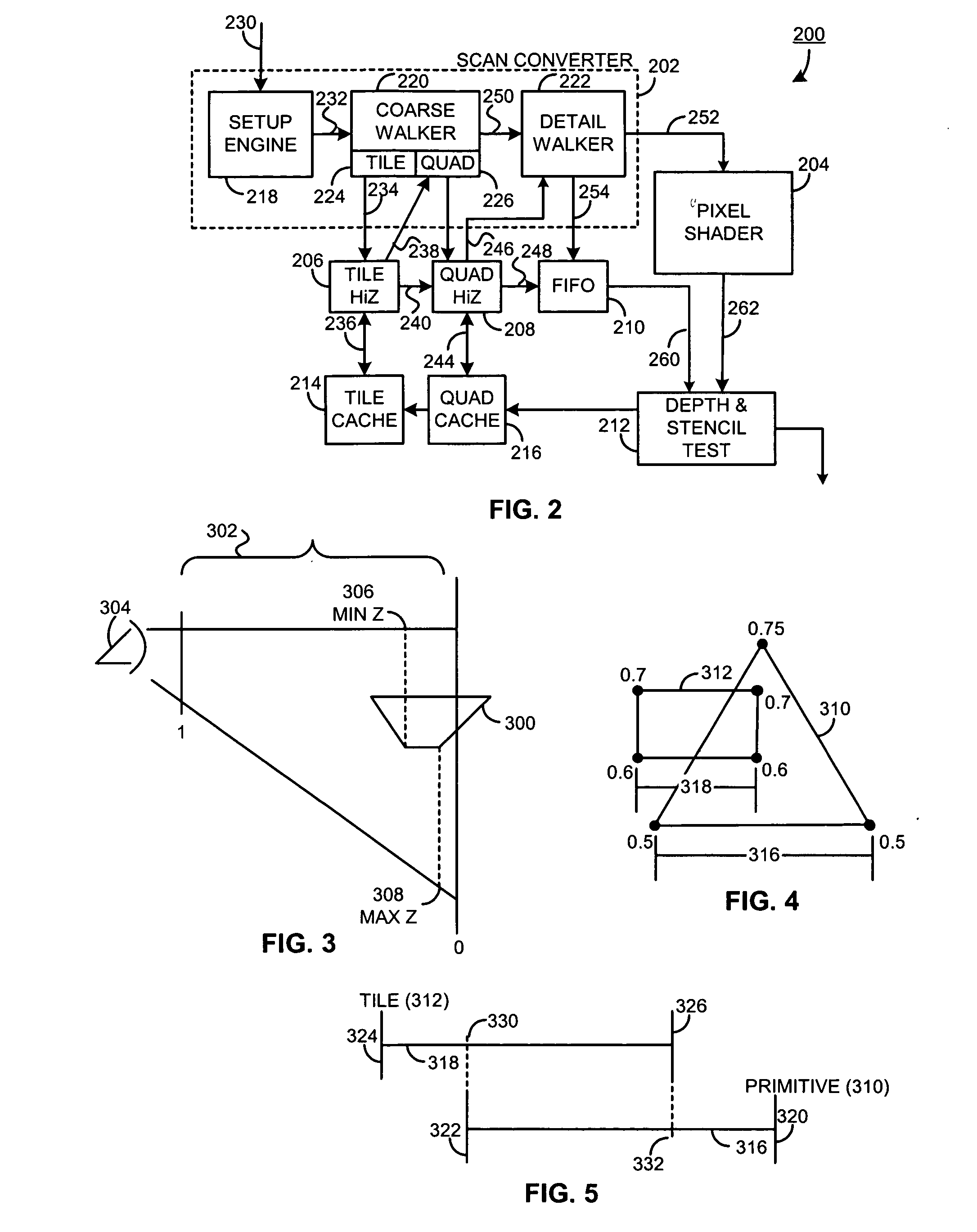Method and apparatus for generating hierarchical depth culling characteristics
a hierarchical depth and culling technology, applied in the field of graphics rendering, can solve the problems of affecting the efficiency of the video graphics system, and potentially overlapping of objects
- Summary
- Abstract
- Description
- Claims
- Application Information
AI Technical Summary
Problems solved by technology
Method used
Image
Examples
Embodiment Construction
[0022] Generally, a method and apparatus for generating hierarchical depth culling characteristics includes determining a first minimum depth value and a first maximum depth value for a first graphical element. A first graphical element may be a primitive, such as a triangle, rectangle or any other graphical element having a plurality of vertices. The first minimum depth value may be the minimum z-plane depth of a pixel within the primitive, first graphical element and the first maximum depth value is a maximum z-plane value for a pixel within the primitive, first graphical element.
[0023] The method and apparatus further includes determining a second minimum depth value and a second maximum depth value for a second graphical element. The second graphical element may be a tile including a plurality of pixels. The second minimum depth value is a minimum z-plane value of the pixels within the second graphical element, the tile, and the second maximum depth value is a maximum z-plane v...
PUM
 Login to View More
Login to View More Abstract
Description
Claims
Application Information
 Login to View More
Login to View More - R&D
- Intellectual Property
- Life Sciences
- Materials
- Tech Scout
- Unparalleled Data Quality
- Higher Quality Content
- 60% Fewer Hallucinations
Browse by: Latest US Patents, China's latest patents, Technical Efficacy Thesaurus, Application Domain, Technology Topic, Popular Technical Reports.
© 2025 PatSnap. All rights reserved.Legal|Privacy policy|Modern Slavery Act Transparency Statement|Sitemap|About US| Contact US: help@patsnap.com



